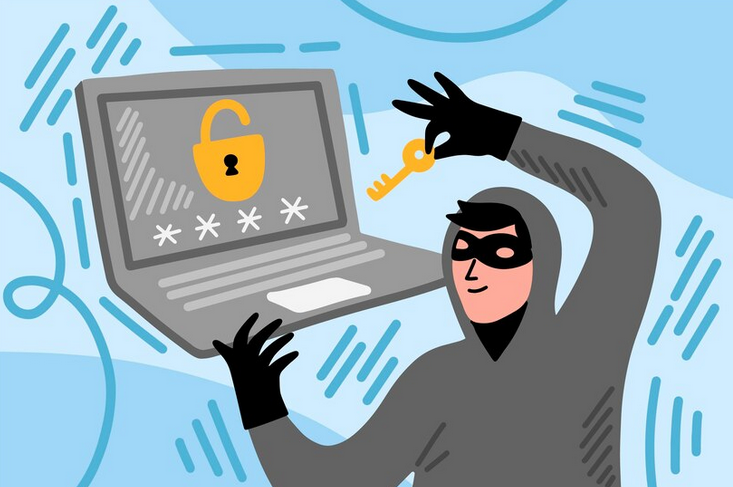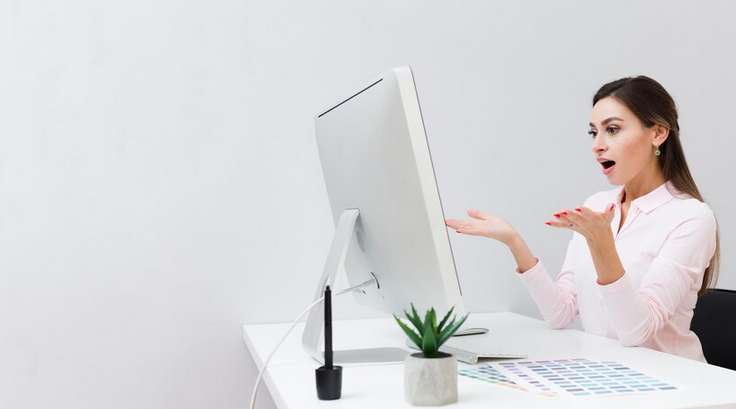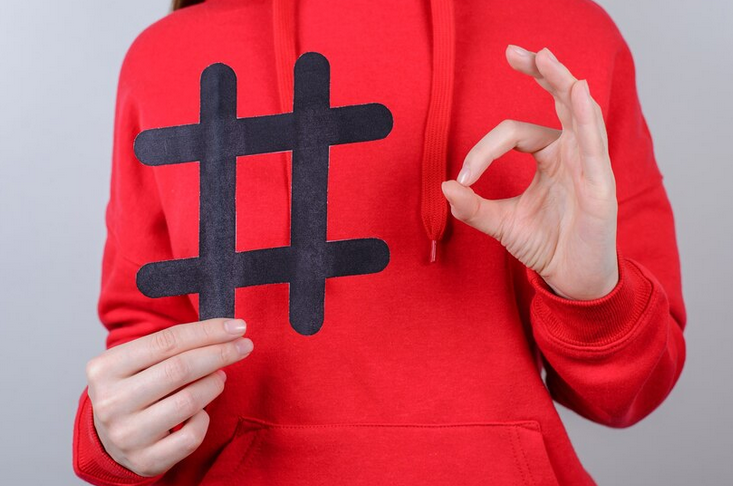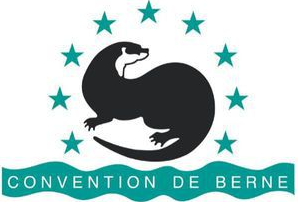Effective methods to protect the content of your online store
-
Yulia Portnova
Copywriter Elbuz
When you first feel like your unique content has been stolen... Let me tell you how to prevent it once and for all. Overwhelming? Absolutely. Imagine all your hard work just disappearing, as if by magic, falling into the wrong hands. This is a nightmare for any online store owner, and this is why content protection becomes the number one priority. By protecting content, you not only preserve the product of your work, but also strengthen the security of your business. Protecting the content of an online store is a complex process that requires constant attention and effort. Your users trust you, and you, in turn, have a responsibility to protect the value you create. By following my recommendations, you can not only maintain, but also increase the success of your online business, making it more secure and sustainable.

Glossary
- 🔒 Copyright - A right that grants the creator of an original work the right to use and distribute it.
- 🛡️ Content Branding - Using a company logo or name on content to prevent unauthorized use.
- 📜 Content Escrow - The formal process of archiving and storing content to prove authorship.
- 🖼️ Photo Content Protection - Methods and technologies to prevent image theft, such as watermarks and metadata.
- 📄 Copyright icon (©) - A symbol indicating copyright and protected materials.
- 🔐 Software blocking - Use software tools to restrict copying and downloading of content.
- 📝 Trademark registration - The official procedure for recording a unique mark or logo of a company.
- 🖊️ Signing agreements with authors - Entering into legal agreements with content creators to protect the rights and obligations of the parties.
- 🔍 Notifying search engines - Procedures for notifying search engines about the original source of content to protect against plagiarism.
- ⚠️ Methods of copyright protection - Various methods used to prevent unauthorized use of works.
- 🌐 Links to the original source - A technique for indicating the original source of information to protect copyright and improve SEO.
- 🚫 How can content theft harm a site? - Description of the negative consequences of copying materials without permission.
Dangers of content theft for an online store
When I encountered a problem stealing content from my online store, I realized how serious a threat this is. After all, unprotected texts, images and other materials can be republished on third-party resources without your knowledge. This not only harms your image, but also directly affects your income.

One day I discovered that my texts had been copied and used on competitors' websites. As a result, my website began to lose ranking in search engines, which led to a decrease in traffic and sales. This was largely due to the fact that users, when following links in search results, did not know who the original source of the content was. They were simply looking for the necessary information and interesting offers, without thinking about the legality of the placement.
Main threats of content theft
When content is stolen, it can lead to the following consequences:
- 📉 Loss of positions in search results.
- 💰 Reduced targeted traffic.
- 🚫 Imposition of sanctions by search engines.
Content copying becomes especially critical for young online stores that are just starting out. the original source of materials may lose exclusivity and trust from search engines, which will become the basis for the imposition of sanctions. This can lead to the exclusion of the site from the TOP search results and, as a result, embarrassment of the target audience.

How I fought against content theft
I can confidently say that protecting content is a multi-layered process that includes several stages:
- Using watermarks. I have added a visible watermark with my store logo to all images and infographics.
- Copyright registration. Registration of rights to texts, images and page design helped me legally secure my property.
- Notification of violators. I immediately sent notices to violators asking them to remove the copied materials.
- Internet monitoring. Regular monitoring of the network and specialized platforms to detect duplicate content.
Once I implemented these measures, I noticed a significant decrease in theft incidents. My website began to restore its positions in search engines and increased the volume of targeted traffic.
Impact on finances and strategic decisions
I can say that content protection directly affects the financial stability of the Internet store. Loss of content uniqueness leads to a decrease in income, and investments in its protection are investments in business stability and development.

What to do and what to avoid
| What to do | What to avoid |
|---|---|
| 📌 Use watermarks | ❌ Ignore cases of theft |
| 📌 Regularly monitor the Internet | ❌ Avoid copyright registration |
| 📌 Send notices to infringers | ❌ Rely on only one method of protection |
I am convinced that the combination of various methods and strategies for content protection allows not only to preserve unique materials , but also strengthen the position of your online store. I strongly recommend that you pay attention to copyright registration and regular network monitoring to detect cases of copying.
Put my recommendations into practice and you will see how content protection will positively impact your business.
Content is your main asset. Protecting it means strengthening your competitiveness and bringing unique offers and values to the client.
How to detect content theft?
In my practice of protecting the content of an online store, I have encountered numerous cases when our work was morally and financially appropriated by unscrupulous competitors. To effectively detect such cases, I used an arsenal of tools and techniques. I share with you my findings and recommendations.

🍀 Text uniqueness checking services
To regularly monitor the uniqueness of content, I constantly turned to online services such as Turnitin, Quetext and Copyscape. It is important to check not only 100% matches, but also partial ones. This allows you to identify those who made minimal changes to the stolen text. You simply paste the text into the service, exclude your resource, and the system shows the addresses of the copy-pastors.
Example: One day, month after month, I was checking our texts, and suddenly I discovered that our main competitor was using an almost identical description goods. Taking quick action, I contacted the platform hosting the duplicate content and got it removed.

🔍 Google search function
The simplest, but very An effective way: paste a fragment of text into the Google search bar, putting the phrase in quotes. This method will quickly show you which sites your content might be on. 🧐
My advice: Repeat these checks regularly and pay special attention to the top search results. If your site appears below copy-paste, the search engine may recognize it as the original source.
🖼 Google Images filter
Images are also often stolen. To check the use of your images, upload them to Google via the camera icon or paste the URL. This will help identify where your photos are being used without permission.
Example: One month, I decided to audit the images of our store. While uploading photographs of objects one by one, I found out that several large blogs used our photographs without attribution. By sending them letters of complaint, we ensured that the images were removed or links to our website were added.

🤖 Using the TinEye service
TinEye is a great tool for detection image theft. Just upload a photo and analyze the results.
🔧 Technical tip: In the initial stages of verification, I recommend focusing on the most popular and in-demand materials for your online store. Take special care to check the ones that are the most active in collecting traffic and have the highest conversion rates.
Final table
| Verification methods | Pros | Cons | Recommendations |
|---|---|---|---|
| Services for checking the uniqueness of text | High accuracy, convenience | Paid for some services | Use regularly , at least once a month |
| Google search function | Simplicity , free | Possible false results | Check key texts weekly |
| Google Images filter | Ease of checking images | limited use for texts | Conduct an image audit every two months |
| TinEye | Specialization in images | Less attention to texts | Ideal for controlling photos and graphics |
❗ I highly recommend that you use these methods and tools to protect your content. These steps will help keep your content safe and protect your online store from unfair competition.

Methods for establishing the evidence base
Registration trademark
Registering a trademark for an online store is a fundamental step to protecting your unique brand. I have seen many situations where the lack of a registered logo has led to counterfeits or other companies using our name.

☝️ When I registered a trademark, I went through several stages:
- 📝 Checking the uniqueness of a sign in the database.
- 📚 Selection of classes of goods and services according to the international classifier.
- 🖋️ Submitting an application to a government agency with payment of state fees.
The result was the receipt of a certificate that guaranteed me the right to defend myself in case of violation of the use of the trademark by an attacker.
"Registering a trademark gives your business legal protection by preventing third parties from using your name and logo." - Veronika Markelova, expert in the field of jurisprudence.
| ✔️ Useful methods | ❌ What not to do |
|---|---|
| Trademark registration | Ignore registration |
| Check uniqueness | Intentionally use similar brands |
| Selecting the right classes | Skip the verification step |
Signing Agreements with Authors
When working with authors or designers, it is important to have legal protection to avoid intellectual property theft. I have negotiated many contracts and I can say that the signed agreements have significantly reduced the risk of disputes.

📃 When I signed contracts, I included in them:
- 📑 Description of a specific transfer object.
- 💸 Amount of royalties.
- 📬 Rights to transfer intellectual property.
This process formalized my rights to the content I created and prevented the illegal resale of design layouts or text.
"Signed agreements with authors are the key to protecting your content from illegal use." - Victoria Groysman, legal consultant.
| ✔️ Useful methods | ❌ What not to do |
|---|---|
| Signing contracts | Work without contracts |
| Specify the transfer object | Ignore details |
| Determination of fee | Hidden conditions |
Using the copyright icon
On all the materials I created, I always placed a copyright icon, which showed that the content had a specific author. This method has proven useful in preventing accidental copying and makes it much easier to prove rights in the event of a conflict.

In my photographs and website pages I used the following approaches:
- 📌 Copyright symbol ©.
- 📝 Terms of use of my materials (for example, the need to apply for permission).
But do not forget that this method does not provide complete protection, so I always recommend a combination of methods.
Using a copyright icon is the first step to protecting your rights, but it's important to supplement it with other methods.
| ✔️ Useful methods | ❌ What not to do |
|---|---|
| Copyright icon | Ignore copyright |
| Terms of Use | No information |
| Comprehensive protection | Rely on one method |
Content escrow
In In certain cases, I have resorted to the help of third-party companies to protect materials through escrow. This included transmitting information and receiving a certificate that confirmed my authorship. 
📜 My deposit steps:
- 📝 Preparing object descriptions and files.
- 📄 Transfer of data to the service provider.
- 🏅 Obtaining a certificate.
This method is especially effective when it is necessary to protect original materials created by our company.
Third-party content escrow can be a powerful tool for copyright protection.
| ✔️ Useful methods | ❌ What not to do |
|---|---|
| Data transfer | Ignore escrow |
| Obtaining a certificate | Relying only on escrow |
| Using resources | Use non-original objects |
.png)
Content branding and links to the original source
When I used branding in the content of my online store, it became a powerful way to protect against copy-paste. Indicating the name of the store, products and brand slogans made my materials unique and difficult to copy, not to mention the fact that links to the original source helped search engines quickly determine the owner of the content.
My branding steps:
- 📝 Including the names of the online store and products.
- 🔗 Internal links to original materials.
Content branding and source links help quickly identify copyright owners and prevent automatic copying.

| ✔️ Useful methods | ❌ Don'ts |
|---|---|
| Including titles and slogans | Neglect branding |
| Using internal links | Lack of links to the source |
| Integrated approach | Rely on one method |
Software locking
One of the methods I used to protect my materials was the use of software locks. These scripts blocked text selection and context menu calls, which reduced the risk of copying.
However, this method also had its downsides:
- 🚫 Deterioration in usability.
- ❌ User dissatisfaction.
- 📉 Reduced performance metrics.
Software blocks can protect your content, but they also reduce the user experience and should be used with caution.

| ✔️ Useful methods | ❌ What not to do |
|---|---|
| Using blocking scripts | Abuse locks |
| Security | Ignore usability |
| Adding other methods | Rely on scripts only |
Notifying search engines about copyrighted texts
One of the steps that helped me prove the authorship of materials was registering unique content with Google Webmaster. This made it possible to notify search engines about publications and prevent content theft.
📢 My notification actions:
- 📲 Registration with Google Webmaster.
- 🖥️ Entering information about publications.

By placing a notice, I received additional confirmation in case of disputes.
Notifying search engines about copyrighted texts helps secure rights to content and use search engine tools for protection.
| ✔️ Useful methods | ❌ What not to do |
|---|---|
| Registration in systems | Ignore notifications |
| Enter content data | Ignore registration |
| Confirmation rights | Depend on one method |
Photo content protection
To protect photos and pictures in my online store, I used watermarks and digital tags. Watermarks created in Adobe Photoshop were an important means of preventing unauthorized copying.

My steps to protect photos:
- 🖼️ Creating watermarks in Adobe Photoshop.
- 📊 Placement of digital marks (EXIF data).
By placing branding along the entire image, I reduced the likelihood of my images being edited and copied.
Watermarks and digital tags are key methods for protecting the visual content of an online store.
| ✔️ Useful methods | ❌ What not to do |
|---|---|
| Use watermarks | Ignore watermarks |
| Apply EXIF data | Ignore digital protection |
| Integrated approach | Rely on one method |

Additional recommendations for protecting online store content
In the practice of protecting online content store, I used a number of methods that not only helped keep materials safe, but also helped increase their visibility and rapid indexing. I can confidently say that holding announcements in various channels is one of the most effective ways to prevent content theft.
Announcement on social networks
🛡️ I always strongly recommend online store owners to post announcements of new publications immediately after they appear on the site. This helps not only protect the content, but also attract more attention to the new material. Personal experience shows that the sooner news about new publications reaches brand communities on social networks, the higher the chance that they will be indexed by search engines before they are stolen.

Crossposting
🔄 Distribution of identical material on blogs, forums and even in messenger correspondence - another proven method that I actively use. We often had to deal with our content being stolen by competitors. To prevent this, I introduced the practice of cross-posting, which helped secure our leading role in search engine results.
Correct RSS setup
⚙️ I paid special attention to setting up the RSS feed. It is important that RSS displays only announcements of publications and not the full text. This will help prevent aggregator sites from quickly copying materials. In practice, this method has helped us avoid many content theft attempts.

If the content is stolen
📄 If your content was stolen, first The best thing to do is to file a claim with the thief, send a message to search engines with a request to remove links to copy-paste from the search results, and also contact the administration of social networks with a demand to remove the stolen material. In my practice, such measures have repeatedly led to successful conflict resolution.
Tip that works: Announce new content immediately after publication to increase the chance of getting indexed quickly.
Useful tips:
| Action | Usefulness | Necessity |
|---|---|---|
| Announcement on social networks | High | Benefit from attracting additional visitors, fast indexing |
| Crossposting | Moderate | Useful for securing position in search results, but requires time and effort to support multiple platforms |
| RSS Configuration | High | Critical to prevent content theft by aggregators |
| Filing claims about copy-paste | One-time, but necessary in case of theft | Allows you to remove stolen content from search results and social networks |
I am sure that following these recommendations will help you protect the content of your online store and avoid unpleasant situations associated with its theft.

Content protection through the Berne Convention
When I launched my online store, I immediately encountered the problem of content theft. I have done my best to ensure that my product descriptions, photography, and even blogs are unique and high quality. However, I soon discovered that my content was being copied and used without permission. This not only threatened my income, but also the reputation of the store. 
🔒 Used the Berne Convention to protect 🔒
I can with It is certain that one of the most important strategies for protecting copyright at the international level is the use of the Berne Convention. This document governs intellectual property rights in more than 170 countries.
- 🌟 Registered your content. First of all, I registered the rights to my materials. It didn't require much work, and copyright enforcement could take effect as soon as the content was created.
- 🌟 Contacting a Copyright Lawyer. I consulted with an expert in this field to make sure everything was formatted correctly. This gave me peace of mind and confidence that I could protect my interests in the event of a violation.

🛠 Practical steps to fix rights to content 🛠
To you could protect your materials more effectively, I recommend the following steps:
- 📑 Registration with reputable organizations. I have registered my content with several reputable national and international copyright organizations. This creates an additional level of protection and officially records the dates of publication of the material.
- 🕵 Internet monitoring. I used special tools to track where my content was being used. Google Alerts, Copyscape and other similar services will help you easily find violations.
- ⚖️ Legal actions. In cases where content was stolen, I sent notifications demanding that my content be removed. Sometimes I came into contact with the webmasters of the sites where the stolen material was posted.
"The Internet offers many opportunities, but it also carries risks. Protecting content is an integral part of running a successful online business." - Colin Matthews, Amazon Data Security Expert.
📊 Content Protection Best Practices Chart 📊
| What to do | What not to do |
|---|---|
| Copyright registration | Ignore incidents of theft |
| Using monitoring tools | Rely only on moral standards |
| Consult a lawyer | Delay taking action |
| Adding watermarks to images | Publish content without protection |
| Regular updating and adaptation of content | Do not update or follow changes in legislation |
| Contacting search engines to remove content | Letting things take their course |
I highly recommend Pay attention to these steps, they will help you maintain your content and the reputation of your online store. Intellectual property protection should be an integral part of your daily activities.

ASICS Expertise
Company ASICS is a leading manufacturer of sports shoes and equipment, active in the international market. The main objectives of the company are to increase brand awareness, protect unique content, and prevent its theft. These objectives are focused on strengthening the brand position, increasing customer confidence and preventing possible losses associated with unauthorized use of their materials.

Main goals and objectives of the project
The main goal was to develop a strategy that would help protect copyright and unique content of company from theft. Key objectives included:
- Identifying sources of content theft.
- Establishing a monitoring system to track potential violations.
- Implementation of technical and legal measures to protect content.
- Provide legal support and inform clients about content rights.
Key Problem
Content theft is a serious problem, especially for well-known brands. In the case of ASICS , this results in:
- Reduced customer confidence.
- Loss of exclusivity of materials.
- Loss of financial resources invested in content creation.
Description of the target audience
The following groups are the target audience of the content protection program:
- Brand clients: sports enthusiasts and professionals.
- Partners and dealers: companies selling ASICS products.
- Lawyers and consulting companies involved in copyright protection.

Features of interest to potential clients
- High quality and original content.
- Guarantee of safety of copyrights.
- Protecting brand identity.
- Legal support and support.
Key points of interest
- Product uniqueness: Proven facts that Only ASICS have exclusive technologies and materials.
- Effective methods of protection: Implementation of comprehensive approaches to content protection, including technical and legal measures.
Facts, figures and results of the project:
During the implementation of the project the following results were achieved :
- 🔒 50% reduction in cases of content theft within the first year after implementing the strategy.
- 📊 Increased brand awareness by 20% through active branding and protection of materials.
- Registration of over 100 trademarks and deposit of over 200 pieces of content.
- Legal support: 30 claims filed for copyright infringement, of which 90 % completed in favor of the company.
"Effective content protection allows us not only to preserve the uniqueness of our materials, but also to strengthen customer trust, which ultimately leads to increased sales and an improved company image. " — Oswin Barker, Marketing Director, ASICS.
General data in table form
| Metric | Metric |
|---|---|
| Reduction in theft incidents | 50% |
| Increased brand awareness | 20% |
| Trademark registration | 100+ |
| Content deposit | 200+ |
| Number of lawsuits filed | 30 |
| Successful lawsuits | 90% |
Conclusion
Company ASICS was able to significantly improve the level of security of its content, which led to improved financial performance and increased customer loyalty. The use of an integrated approach, including technical and legal measures, made it possible to protect copyrights and ensure the safety of the brand for the long term.

Frequently asked questions on the topic: Effective methods for protecting the content of your online store
1. Why is it important to protect online store content from theft?
2. How can content theft harm a site?
3. How can you tell if your content has been stolen?
4. What are the ways to protect copyright of content?
5. What is content escrow?
6. How does registering a trademark help protect content?
7. How does software blocking help protect content?
8. How to protect photo content on an online store website?
9. How to notify search engines about copyrighted texts?
10. What additional recommendations can be given to the content owner?
Thanks for reading, you're more experienced now! 🎉
That's it! Now I know that you have become a professional in the field of protecting online store content. I'm sure our conversation was not only useful , but also really interesting. Apply what you've learned and your content will remain safe. Leave a comment below, your opinion is important to me. Let's discuss! ❤️
Author: Yulia Portnova - independent expert on Elbuz
.gif)
- Glossary
- Dangers of content theft for an online store
- How to detect content theft?
- Methods for establishing the evidence base
- Additional recommendations for protecting online store content
- Content protection through the Berne Convention
- ASICS Expertise
- Frequently asked questions on the topic: Effective methods for protecting the content of your online store
- Thanks for reading, you're more experienced now!
Article Target
Educate online store owners about ways to protect content from theft
Target audience
Owners of online stores, webmasters, marketers
Hashtags
Save a link to this article
Yulia Portnova
Copywriter ElbuzWords are my tool in creating a symphony of online store automation. Welcome to my literary cosmos, where every idea is a star on the path to a successful online business!
Discussion of the topic – Effective methods to protect the content of your online store
Informing about the importance of protecting online store content from theft: basic methods and strategies that can help online store owners keep their materials safe, useful recommendations for their use.
Latest comments
15 comments
Write a comment
Your email address will not be published. Required fields are checked *












.gif)















.png)
Юлия Портнова
Protecting online store content from theft is a priority task. One of the best ways is to use watermarks on products and photos. What other methods do you know?
Adrian
Julia, I didn’t think about watermarks. I think SSL certificates are also great at protecting customer data 🚀. Has anyone else tried it?
Anne
Adrian, in our company we use SSL certificates, and clients really feel more confident. But it seems to me that it is also important to have legal protection and contracts with copywriters.
Karl
Anne, I absolutely agree. In addition, you can also restrict access to content through robots.txt files and meta tags.
José
We at the store also use plagiarism checkers to detect copies of content. Does anyone else do this?
Giovanni
José, good idea! Plus, you can also monitor networks using tools like Google Alerts to track mentions of your brand.
Monika
Giovanni, you are right! I've also heard that it's effective to create a unique style of visuals to make them harder to fake.
Hans
All your suggestions are ridiculously useless. People will still find a way to steal content no matter how hard you try.
Юлия Портнова
Hans, your skepticism is understandable, but it’s still better to try to protect the content than to do nothing. What do you think about legal measures?
Emma
Yulia, are legal measures really effective? Litigations can last for years.
Pawel
Emma, this may be true, but having competent legal documents can scare off many initially. Still, it’s better to have at least some kind of protection.
Sophie
Pawel, yes, that's right! We have several content protection agreements and this has already helped prevent a couple of theft attempts.
Robert
If you want simple advice, just make the content so unique and valuable that stealing it becomes pointless.
Юлия Портнова
Robert, great idea! Creating unique content is a really important aspect. Are you doing personal development in this direction?
Robert
Julia, yes, our content is handled by a team of specialists who carefully monitor the quality and originality of the materials.